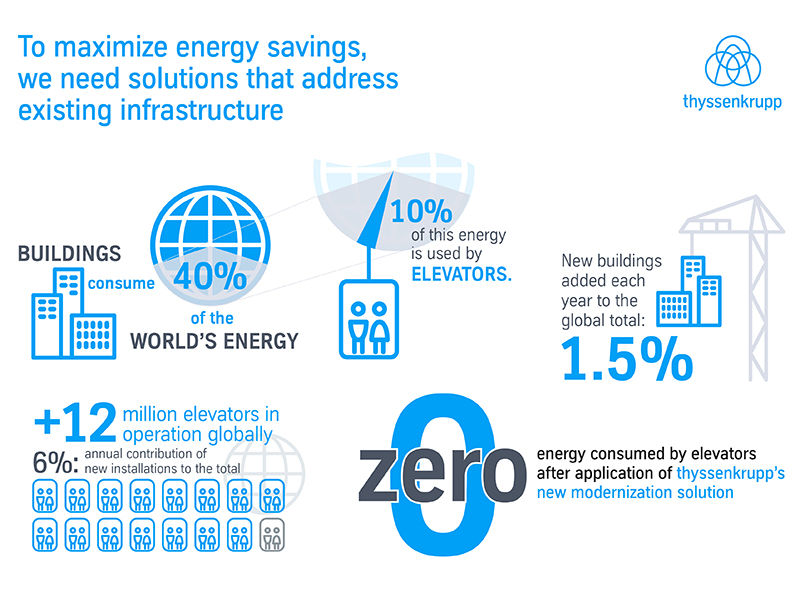Photo: © privat

News | April 2024
Obituary for Gerhard Thumm
Gerhard Thumm died at the end of February 2024 at the age of 72. He held various responsible positions at TK Elevator from 1976 to 2018.

(Photo: © thyssenkrupp)
July 2017
At the Energy Efficiency Global Forum in Washington DC thyssenkrupp showcased its latest innovation in making urban mobility greener: a net-zero energy system which can be used for existing elevators.
With buildings now accounting for as much as 40% of global energy consumption, thyssenkrupp has developed a net-zero energy system. That marks a milestone moment for the building industry and opens the door to more energy-savvy technologies being implemented to tackle resource scarcity.
The development of thyssenkrupp’s net-zero energy system was motivated by the long lifecycle of elevator equipment; on average, elevators remain in a building for 15 years and each year new installations contribute to only 6% of the +12 million units currently in operation. Across the world, elevators transport over one billion people each day and can account for up to 10% of a building’s energy consumption. Therefore for thyssenkrupp, finding a solution to improve efficiency in existing elevators was essential to reducing the overall energy consumption in our built environment.
“Energy creating” elevators are already popular, converting the elevator’s kinetic energy into electricity that can be fed back into the building’s power grid. thyssenkrupp installed this solution at the One World Trade Center in New York, where the elevators regenerate energy in an amount that could feed the building's entire lighting system.
 But the new net-zero concept goes one step further, focusing on improving energy efficiency even when the elevator is idle, which can be as much as 70% of its working life. The design uses new controllers which trigger “hibernation” or “sleep” modes in idle cabins thus significantly reducing the energy demand. The required energy can be generated using solar panels no larger than the footprint of the elevator shaft, creating net-energy positive systems that generate more energy than they consume.
But the new net-zero concept goes one step further, focusing on improving energy efficiency even when the elevator is idle, which can be as much as 70% of its working life. The design uses new controllers which trigger “hibernation” or “sleep” modes in idle cabins thus significantly reducing the energy demand. The required energy can be generated using solar panels no larger than the footprint of the elevator shaft, creating net-energy positive systems that generate more energy than they consume.
Testing for the net-zero concept has been rigorous. The system was installed in a building that is over 100 years old, as part of a third-party validation project with the Fraunhofer USA Center for Sustainable Energy Systems. The goal was to turn the company’s headquarters in Boston into a leading center of energy efficiency. A particular focus was on retrofitting energy-efficient solutions in existing buildings.
“If we are to meet the sustainability targets defined by countries and ultimately save our planet’s resources, authorities and private companies need to act collaboratively in implementing the latest technology solutions to deliver real energy savings”, says Andreas Schierenbeck, CEO of thyssenkrupp Elevator. “At thyssenkrupp, we are constantly evolving our game-changing technologies and solutions in order to best serve current and future urban mobility needs.”
Write a comment